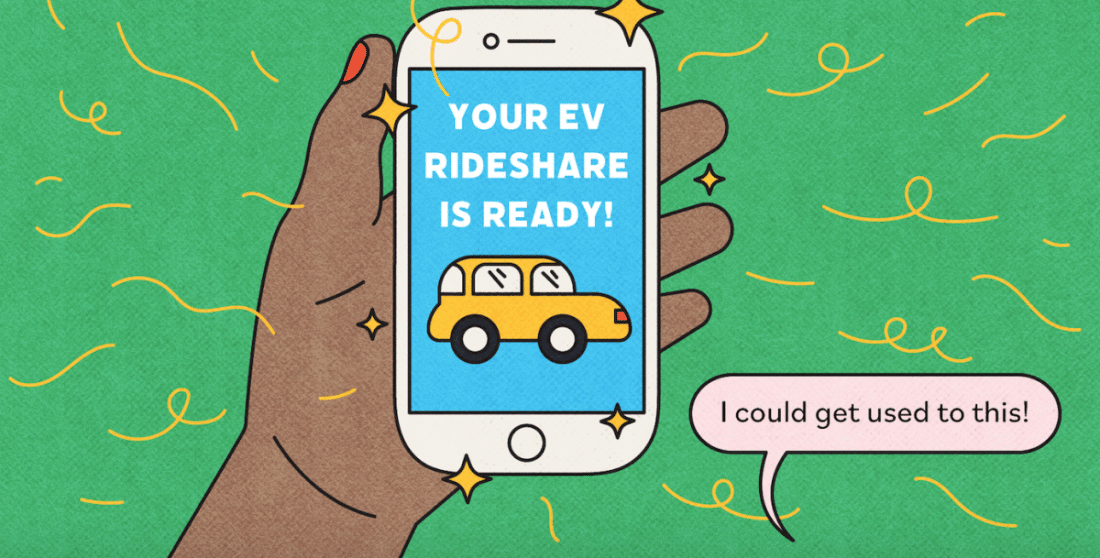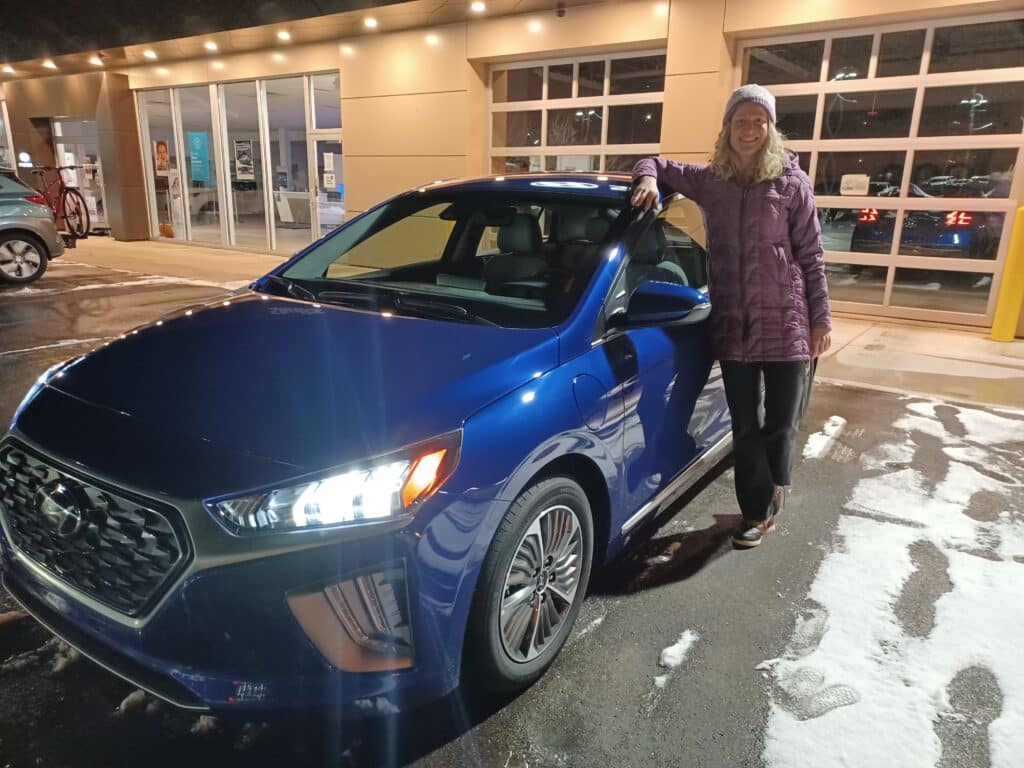Visit any big city, and you’ll witness how shared transportation options have grown, from electric scooters tossed along sidewalks to bike and car sharing services. These can be a (relatively) cheap and easy way to zip around city streets. But the real potential of these shared services goes well beyond cities and well-heeled urbanites. In the case of car sharing, if the program is designed strategically—including prioritizing the use of electric vehicles (EVs)—there are prospects for a triple win: convenient transportation, lower emissions, and more affordable mobility options for under-resourced populations.
Cost savings and convenience
Car sharing has a lot going for it. Worldwide, membership in car sharing organizations like Zipcar and Getaround—which offer users access to a fleet of ready-to-drive cars, typically via an app—doubled between 2016 and 2018, to more than 30 million. People are flocking to shared cars for a lot of reasons, but the main ones are convenience and cost savings. Car sharing (which is different from car rentals or ride-hailing services like Uber and Lyft) offers the benefit of using a vehicle without the high costs associated with private car ownership, like insurance, gas, maintenance, and parking. Usually, vehicles are stationed in locations like residential neighborhoods or near public transit stations and universities, making them convenient for a wide range of users.
Lower emissions
Car sharing, if done well, can also be a great way to tackle rising emissions from transportation, the fastest growing source of greenhouse gas emissions worldwide. Studies show that when people gain access to a shared vehicle, they may get rid of their private car or avoid buying a new one; they also tend to walk, bike, or take public transit more. This brings other cascading benefits, including reducing the overall vehicle miles traveled and lowering traffic congestion and the demand for parking—all of which help slash driving-related emissions. Overall, the research points to a decrease in net greenhouse gas emissions among car sharing members, although it can depend on the context.
When electric vehicles enter the picture, there’s no question that car sharing is a win for the climate. Over their lifetime, emissions for EVs are three times lower than for internal combustion vehicles. While specific data on the emission savings from EV car sharing aren’t available, studies show that if you replace a conventional ride-hailing vehicle (like an Uber) with an EV, this can result in three times the emission reductions compared to a conventional vehicle. When EVs are powered by clean energy, like solar and wind power, they can contribute near-zero emissions. That’s why some ride-hailing services are starting to roll-out EVs.
The equity opportunity
Car sharing also has real potential to provide more equitable access to transport. So far, car sharing companies have focused on urban centers, but rural communities can actually benefit most from these services, due to the lack of density to support traditional public transit, biking, or other options. The typical car sharing user today tends to be young, with more education, a higher income, as well as easy access to the Internet, a smart phone, and banking services. Many popular car sharing services, which rely on an app linked to a bank account, end up excluding populations like the elderly and low-income households.
But it doesn’t have to be this way. If designed with these audiences in mind, car sharing presents an opportunity to provide mobility to people who may not be able to afford the high cost of owning a car, or who simply don’t have access to other good transportation options. By making these services available to more people, including in lower-income and more remote neighborhoods, we can go even further in reducing emissions. Strategies for broadening access and improving equity in car sharing services include providing subsidies for low-income users, making these services more accessible to the “unbanked” and those without smartphones, and developing more inclusive and adaptive services.
Getting car sharing right: a few examples
To optimize the potential for car sharing to both reduce emissions and meet the needs of diverse and under-resourced communities, it has to be “done right.” So far, car sharing has been mostly led by private companies. But in recent years, non-profits and governmental agencies have also gotten in on the action, forming alliances and partnerships focused on shared mobility while keeping in mind equity and the benefits of electrified transport. Here are a few examples of car sharing that tick these boxes:
- In 2016, the City of Los Angeles, California, signed a contract for an electric car sharing pilot project aimed at serving low-income residents. As of April 2019, BlueLA had deployed 80 EVs and 26 charging stations, all located in disadvantaged neighborhoods throughout Central LA. The goals of the program include: 1) recruiting at least 7,000 new car sharing users, 2) avoiding the purchase or sale of 1,000 private vehicles, and 3) reducing 2,150 tonnes of carbon dioxide emissions.
- In the Twin Cities area of Minnesota, the car-sharing nonprofit HOURCAR is developing an all-electric car sharing service and a network of charging hubs in historically underinvested communities. The EV Spot Network, set to launch this year, is a collaboration with Xcel Energy and the cities of St. Paul and Minneapolis, and aims to add 150 shared EVs and 70 charging stations on city streets. The planning process has been largely community-driven. Based on feedback from local residents, HOURCAR has upgraded its system to approve new users quickly (within 24 hours), cut membership costs by 40 percent, and provide materials in several languages, including Somali and Hmong.
- In Hood River, Oregon, Forth Mobility aims to show how EV car sharing can serve rural communities while also benefiting low-income residents and local businesses. The Clean Rural Shared Electric Mobility (CRuSE) Project is one of the first efforts in the country to bring lower-cost car sharing to a rural area. Under the three-year program, five EVs are stationed at affordable housing sites, the city center, and tourist destinations in Hood River. To make the program more accessible, the platform is providing iPads at the affordable housing sites to help people sign up, and is creating a Spanish version of its app. It also offers alternate payment options to support users without access to credit or banking, and tiered pricing (including subsidies) for different user groups.
Innovative transport solutions like EV car sharing are needed to help decarbonize the transport sector in an equitable way. By shifting away from private vehicles and toward less carbon-intensive (but still convenient!) modes of transport, by adding EVs to the mix, and by targeting programs at under-resourced communities, we can move even closer to that goal.















